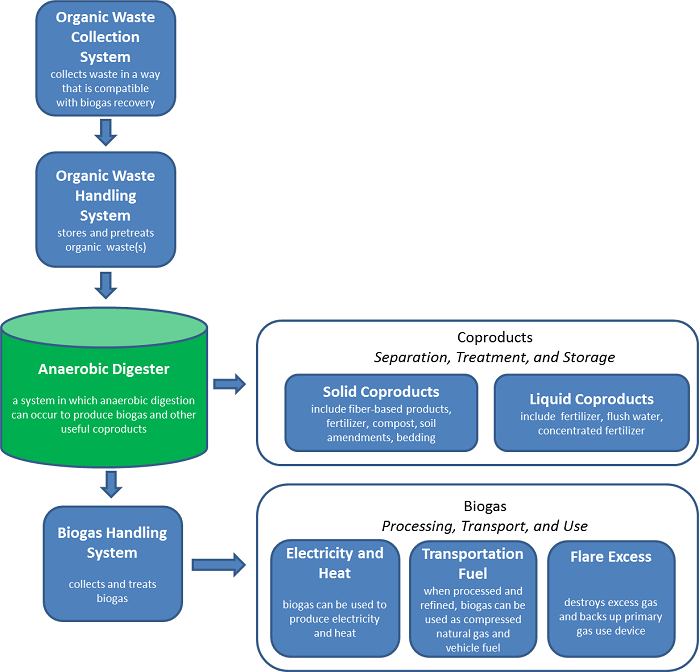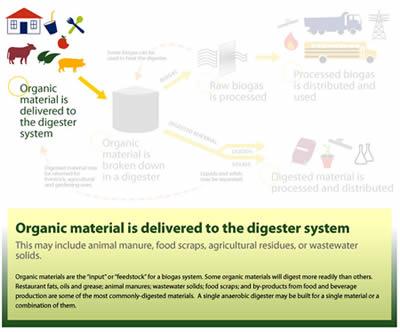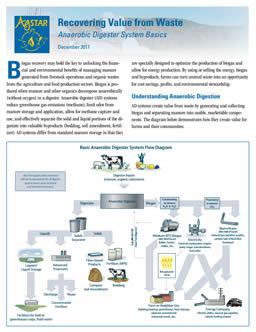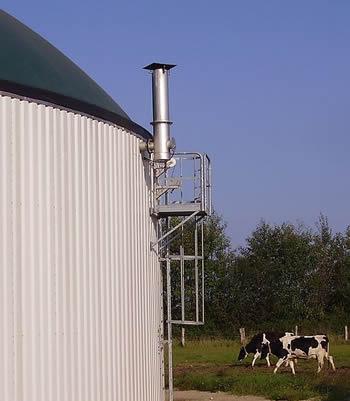 Haase maize anaerobic digester
Haase maize anaerobic digester
Credit: CC-BY-3.0 by FVortexrealm
Biogas is created when animal waste, or manure, decomposes. Capturing biogas from cattle, hog and poultry farms can reduce greenhouse gas emissions and recovering the methane from the biogas can provide a cost-effective source of renewable energy. Recovered biogas can be an energy source for electricity, heating or transportation fuel.
Biogas recovery is a proven technology that is widely used in sectors like food processing and wastewater treatment. In agriculture, biogas recovery systems are already used at hundreds of farms, and could be used at thousands more cattle, hog and poultry farms. For example, AgSTAR estimates that biogas recovery systems are technically feasible at over 8,000 large dairy and hog farms alone!
A natural process called anaerobic digestion creates biogas. Anaerobic digesters are closed systems that harness this natural process to produce biogas and other useful coproducts. These systems also reduce odors, pathogens and waste.
Learn more about:
How does anaerobic digestion work?
Anaerobic digestion is a process through which bacteria break down organic matter—such as manure—without oxygen. As the bacteria “work,” they generate biogas. The biogas that is generated is made mostly of methane, the primary component of natural gas. The non-methane components of the biogas are removed so the methane can be used as an energy source.
Some types of organic matter break down more easily than others. Generally, the more “digestible” the organic matter is, the more biogas can be produced.
Codigestion occurs when anaerobic digestion is used to break down multiple types of organic waste in one anaerobic digester. Organic wastes that can be used in codigestion with manure include restaurant or cafeteria food wastes; food processing wastes or byproducts; fats, oil and grease from restaurant grease traps; energy crops; and crop residues. Codigestion can increase biogas production from low-yielding or difficult-to-digest organic waste.
A biogas recovery system includes:
Organic Waste Collection System
Biogas production is best suited for farms that collect manure:
- As a liquid, slurry or semi-solid;
- At a single point (a lagoon, pit, pond, tank or other similar structure);
- Every day or every other day;
- Free of large amounts of bedding or other materials (e.g., rocks, stones, straw or sand), which can clog the pipes of the digester and hinder operation.
Other materials such as feed additives with antibiotics and equipment cleaning and maintenance compounds (e.g., detergents, acids and halogens, etc.) may be harmful to anaerobic bacterial action. The typical use of these materials has not been a problem in full scale digesters. However, threshold levels for these compounds have not been established, so operators should be careful not to release large quantities of these materials into manure before it is fed to the digester.
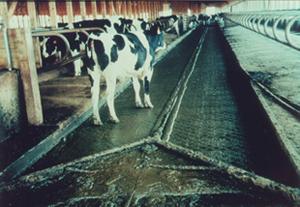 Chain drag scrape alley; Credit: AgSTAR
Chain drag scrape alley; Credit: AgSTAR
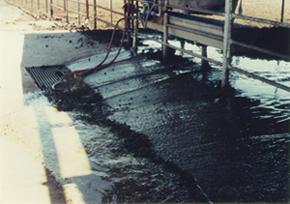 Receiving pit for flush dairy dry lot; Credit: AgSTAR
Receiving pit for flush dairy dry lot; Credit: AgSTAR
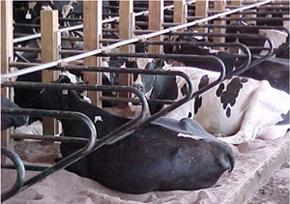 Sand bedding: Credit: McLanahan Corporation
Sand bedding: Credit: McLanahan Corporation
Organic Waste Handling System
Manure may be pre-treated before entering a digester to adjust the total solids content. This may include adding water, separating solids, mixing or heating.
Anaerobic Digester Designs
In a covered anaerobic lagoon design, methane is recovered and piped to the combustion device from a lagoon with a flexible cover. Some systems use a single cell for combined digestion and storage.
 Diagram of a covered anaerobic lagoon showing 2 cells, where the first cell collects the digester influent and traps the biogas and the second cell collects the digester effluent
Diagram of a covered anaerobic lagoon showing 2 cells, where the first cell collects the digester influent and traps the biogas and the second cell collects the digester effluent
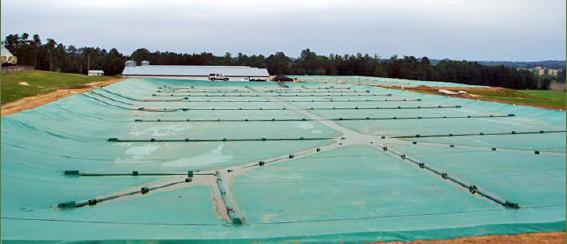 Photo of a covered anaerobic lagoon
Photo of a covered anaerobic lagoon
Plug flow digesters are primarily used at dairy operations that collect manure by scraping. Mixed plug flow systems have been used at a wider variety of operations because they can tolerate a broader range of solids concentrations.
 Diagram of a plug flow digester showing digester influent entering and flowing through the digester with the biogas being captured and stored beneath a cover
Diagram of a plug flow digester showing digester influent entering and flowing through the digester with the biogas being captured and stored beneath a cover
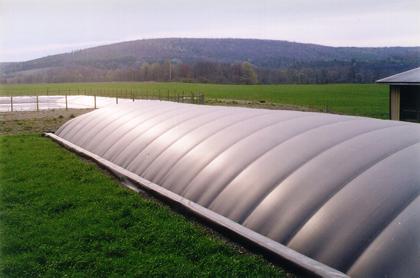 Plug flow digester with a flexible cover
Plug flow digester with a flexible cover
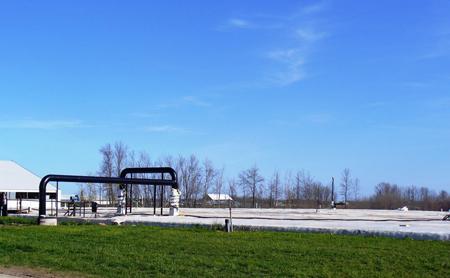 Plug flow digester with a rigid cover
Plug flow digester with a rigid cover
Complete mix digesters are designed with an enclosed, heated tank with a mechanical, hydraulic or gas mixing system. Complete mix digesters work best when there is some dilution of the excreted manure with water (e.g., milking center wastewater).
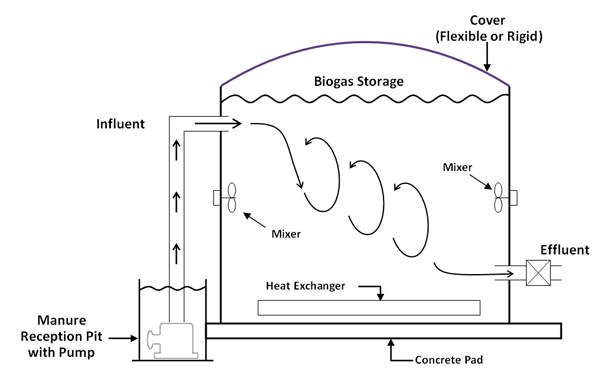 Diagram of a complete mix digester illustrating the process of adding manure into the digester; mixing, heating and storing the biogas within the digester; and extracting the resulting effluent
Diagram of a complete mix digester illustrating the process of adding manure into the digester; mixing, heating and storing the biogas within the digester; and extracting the resulting effluent
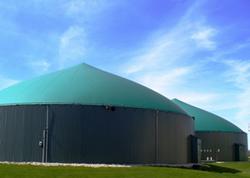 Photo of two complete mix digester tanks
Photo of two complete mix digester tanks
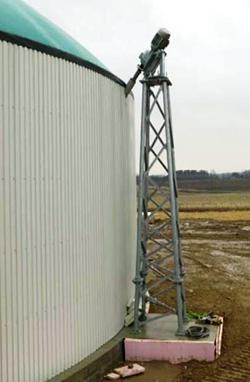 Photo of an externally mounted mixer
Photo of an externally mounted mixer
Other common designs for anaerobic digesters include:
- A batch digester is the simplest form of digestion, where manure is added to the reactor at the beginning of the process in a batch and the reactor remains closed for the duration of the process.
- Induced Blanket Reactors are digesters in which a blanket of sludge develops and retains anaerobic bacteria, providing a bacteria-rich environment through which the feedstock must pass.
- Fixed film digesters contain plastic media (e.g., pellets) on which bacteria attach and grow, instead of relying solely on suspended bacteria to break down the digester feedstock.
Coproducts: Solid and Liquid Components
Digested solids can be removed from the digester effluent with a solids separator. Solids are commonly used as livestock bedding, but can also be sold for use in landscape products, such as soil amendments or biodegradable planting pots. Emerging applications for effluent solids include use in structural building materials, such as deck boards and particle board.
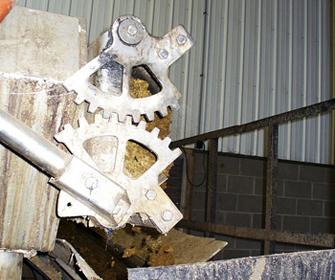 Photo of a screw press separator
Photo of a screw press separator
 Photo of separated solids conveyed from screw press separator
Photo of separated solids conveyed from screw press separator
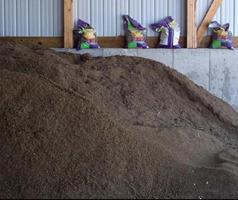 Photo of potting mix created from digested solids
Photo of potting mix created from digested solids
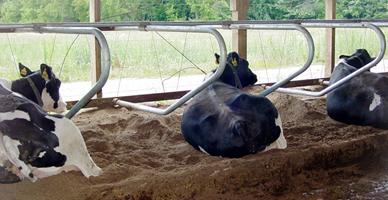 Photo of cows on separated solids bedding
Photo of cows on separated solids bedding
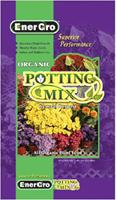 Photo of packaged potting mix from digested solids
Photo of packaged potting mix from digested solids
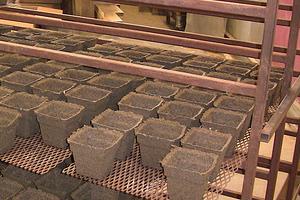 Photo of planting pots made from digested solids
Photo of planting pots made from digested solids
The liquid effluent from a digester can be used as a fertilizer, reducing the purchase of commercial fertilizers.
 Photo of a crop irrigation system
Photo of a crop irrigation system
Biogas Handling System
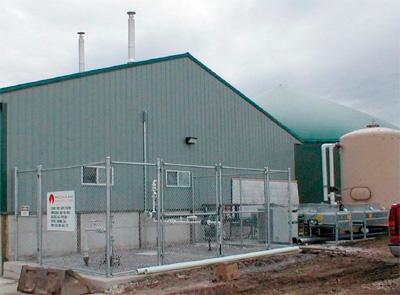 Photo of a biogas treatment system for a pipeline gas project
Photo of a biogas treatment system for a pipeline gas project
Captured biogas is transported through a pipe from the digester, directly to a gas use device or to a gas treatment system. In most cases, the only treatment needed is to remove excess moisture prior to combustion. However, if the feedstock contains high concentrations of sulfur, then hydrogen sulfide is removed from the gas to prevent corrosion of the combustion device.
Biogas: Processing, Transport, and Use
Electricity and Heat
While a variety of biogas use options are available, the collected biogas is most often used to generate electricity.
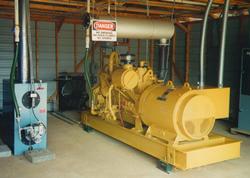 Photo of a 120 kW engine generator set combusts recovered biogas, generating electricity for on-farm use
Photo of a 120 kW engine generator set combusts recovered biogas, generating electricity for on-farm use
Thermal energy in the form of waste heat, produced during electricity generation, can be recovered to heat digesters or adjacent buildings.
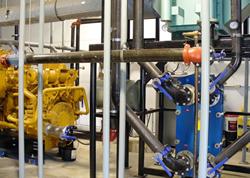 Photo of a heat exchanger that works in conjunction with an engine-generator set to recover heat for space and water heating, thus reducing fuel oil or propane costs.
Photo of a heat exchanger that works in conjunction with an engine-generator set to recover heat for space and water heating, thus reducing fuel oil or propane costs.
Biogas can be fired directly in boilers or heaters as a replacement for propane.
 Photo of biogas boiler. Biogas can be fired directly in boilers or heaters as a replacement for propane
Photo of biogas boiler. Biogas can be fired directly in boilers or heaters as a replacement for propane
Transportation Fuel
Biogas can be processed to pipeline quality and sold to the local gas utility.
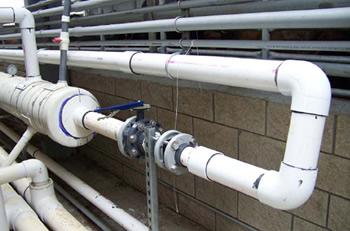 Photo of a biogas pipeline
Photo of a biogas pipeline
Biogas can be converted to compressed natural gas (CNG) which can be used in applications such as vehicle fuel.
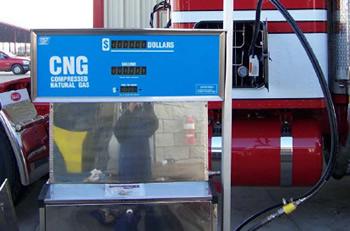 Photo of a truck fueling with compressed natural gas
Photo of a truck fueling with compressed natural gas
Flare Excess
Flares are used to combust excess biogas or to combust biogas during periods when the primary gas use device is undergoing maintenance or repair. In cases where the primary purpose of the digester is to control odor or generate carbon credits, all of the biogas may be flared.
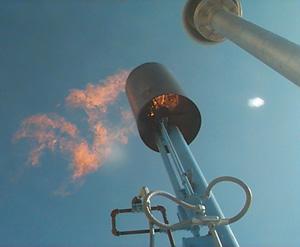 Photo of a biogas flare and flame.
Photo of a biogas flare and flame.
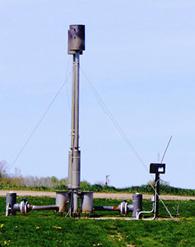 Photo of a biogas flare
Photo of a biogas flare
Learn more from the following resources:
 Haase maize anaerobic digester
Haase maize anaerobic digester 